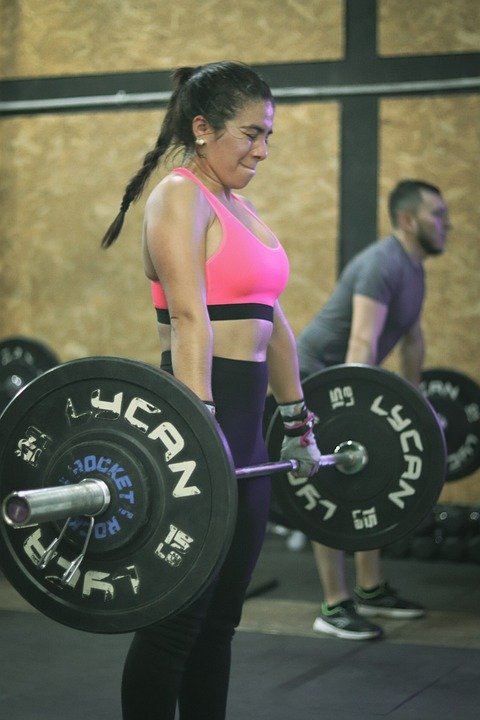Weightlifting for Rehabilitation: Its Role in Injury Recovery and Preventing Future Injuries
Introduction:
Weightlifting is often associated with building strength and muscle mass. However, it also plays a significant role in injury rehabilitation and preventing future injuries. When done under the guidance of a trained professional, weightlifting can help individuals recover from injuries, regain mobility, and enhance overall physical performance. In this article, we will explore how weightlifting can aid in injury recovery and its effectiveness in preventing future injuries. Additionally, we will address some frequently asked questions related to weightlifting for rehabilitation.
The Role of Weightlifting in Injury Recovery:
1. Restoring muscle strength and flexibility:
When an injury occurs, muscle strength and flexibility often suffer. Weightlifting exercises can target specific muscle groups, aiding in their recovery and helping to restore strength and flexibility. By gradually increasing the weight and intensity of the exercises, injured muscles can regain their pre-injury strength and function.
2. Improving joint stability:
Injuries often lead to weakened joints, which can increase the risk of future injuries. Weightlifting exercises that target the muscles surrounding the affected joint can help improve stability and reduce the likelihood of reinjury. Strengthening the muscles around the joint provides added support, reducing stress on the injured area and promoting a faster recovery.
3. Enhancing mobility and range of motion:
Injuries can result in limited mobility and decreased range of motion. Weightlifting exercises that involve controlled movements through a full range of motion can help improve flexibility and joint mobility. These exercises focus on gradually increasing the range of motion, allowing injured individuals to regain their normal movement patterns and reduce the risk of future injuries.
4. Stimulating bone density:
Certain injuries, such as fractures, can weaken bone density. Weightlifting, especially exercises that involve resistance training, can stimulate bone growth and increase bone density. This is particularly important for individuals recovering from fractures or conditions such as osteoporosis, as it helps restore bone strength and reduces the risk of future fractures.
Weightlifting for Preventing Future Injuries:
1. Strengthening muscles and connective tissues:
Regular weightlifting exercises can strengthen muscles and connective tissues, improving overall strength and resilience. Strong muscles and connective tissues act as shock absorbers, helping to prevent injuries caused by sudden impacts or repetitive movements. By engaging in weightlifting routines, individuals can enhance their body’s ability to withstand stress and reduce the likelihood of future injuries.
2. Correcting muscular imbalances:
Muscular imbalances, where certain muscles are stronger or weaker than their counterparts, can lead to poor posture and increased injury risk. Weightlifting exercises can address these imbalances by targeting specific muscle groups to achieve a more balanced physique. This, in turn, helps improve posture and reduces the strain on muscles and joints, preventing injuries related to imbalances.
3. Enhancing overall body mechanics:
Weightlifting exercises focus on improving body mechanics, which refers to the proper alignment and coordination of muscles and joints during movement. By practicing weightlifting with correct form and technique, individuals can enhance their body mechanics, reducing the risk of injuries caused by poor movement patterns. This is especially beneficial for athletes and individuals involved in physical activities that require repetitive movements.
FAQs:
Q1: Can weightlifting worsen an existing injury?
A: Weightlifting should be approached cautiously under the guidance of a trained professional. When done correctly, weightlifting can aid in injury recovery. However, improper form, excessive weight, or inappropriate exercises can worsen an existing injury. It is crucial to consult with a healthcare provider or a qualified trainer before starting any weightlifting program.
Q2: Can weightlifting cause muscle soreness?
A: Weightlifting, especially when starting a new program or increasing the intensity, can cause muscle soreness. This is known as delayed onset muscle soreness (DOMS). It is a normal response to the stress placed on muscles during weightlifting. However, proper warm-up, gradual progression, and adequate rest and recovery can help minimize muscle soreness.
Q3: Can weightlifting be beneficial for older adults?
A: Absolutely! Weightlifting is beneficial for individuals of all ages, including older adults. It helps maintain muscle mass, prevents age-related muscle loss, and improves bone density. However, older adults should seek guidance from a qualified trainer who can tailor exercises to their specific needs and abilities.
Q4: Is weightlifting suitable for individuals with chronic conditions?
A: Weightlifting can be beneficial for individuals with chronic conditions, provided they receive clearance from their healthcare provider. Weightlifting can help manage symptoms, improve muscular strength, and enhance overall physical function. However, it is crucial to work with a qualified trainer who can adapt exercises to the individual’s condition and limitations.
Conclusion:
Weightlifting is not just for athletes and bodybuilders; it plays a vital role in injury rehabilitation and preventing future injuries. By targeting specific muscle groups, improving joint stability, enhancing mobility, and stimulating bone density, weightlifting aids in injury recovery. Additionally, it strengthens muscles, corrects imbalances, and enhances body mechanics to reduce the risk of future injuries. However, it is essential to approach weightlifting with caution, seek professional guidance, and listen to your body to ensure safe and effective rehabilitation and injury prevention.


